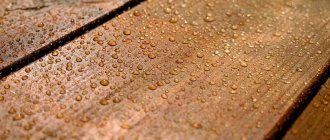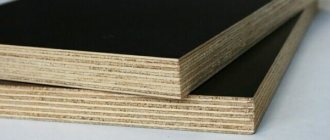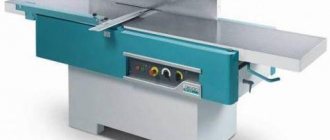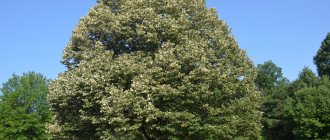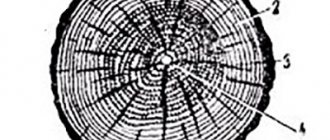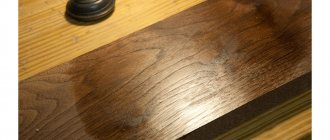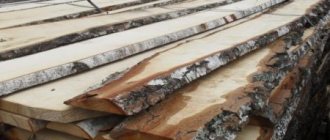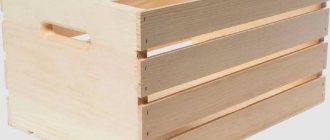The linden tree is light-loving, but it can also feel good in the shade. Propagates from seeds and also vegetatively. Europe is considered its homeland. A tree with regular, abundant watering in moist, well-drained soil can grow up to 30–40 meters. The average life span of a linden tree is 150 years. Wood is often used in the construction of rooms with high humidity.
Features of the tree
Any variety of linden can be used by humans almost completely. The linden tree produces honey and bark. So, shoes, ropes, and fishing nets can be made from bast fibers. Even leaves, juice and linden charcoal are used. And from wood you can make dishes, interior items, and use it as a building material.
Linden wood is white, but with a pink tint. The characteristics of this material are as follows:
- Easy to cut.
- It pricks well.
- Has normal softness.
- Has sufficient elasticity.
- Excellent paint.
- Holds nails firmly even of large sizes.
- Has high durability.
Linden wood is resistant to changes in volume, the material does not form cracks or warp. The average volumetric mass of linden with a moisture content of 15% is 0.51 grams per cubic centimeter. Based on this indicator, the average wood density coefficient is calculated. In linden it is 0.53 g/cm3. It belongs to those types of wood that have low density.
This is what a linden tree looks like in the photo
The thickness of any wood does not conduct heat well from surface to surface. In dry wood, the entire intercellular space is filled with air, and it is the worst conductor of heat. Considering that linden is a priori wet wood, its thermal conductivity is somewhat lower and is at the level of 150 W/(m K).
Another feature of linden: it does not absorb heat and does not burn (we are talking about baths where the temperature is high). The modulus of elasticity of linden wood is inferior to that of aspen. The compressive strength of linden at a humidity of 12% and static bending does not exceed 760 •105 Pa. The end hardness is 248 • 105 Pa.
Natural moisture content, which is inherent in wood when growing or just cut, is measured without additional drying. There are no clear humidity standards; it ranges from 30 to 80% depending on the growing conditions and time of year. Wet wood reaches 100% humidity. Freshly cut linden also has high humidity levels from 50 to 100%.
Schematic representation of a linden tree
The specific gravity is determined by summarizing the results of measurements that were carried out in different climatic zones. But even such data is not static. In linden they range from 490 to 530 kg/m3 at normal humidity, but at 100% this figure can even exceed 800 kg/m3.
Volumetric weight is directly proportional to humidity. From drying after critical saturation of the fibers, which begins at a humidity close to 30%, the volumetric weight decreases more slowly than before it. Many of these indicators depend on where the tree grew and what type of tree it was.
Wood volumetric weight indicators
| Humidity, % | Weight, kg |
| 12-18 | 450 |
| 18-23 | 500 |
| 23-25 | 550 |
| Freshly cut | 800 |
Tips Properties of linden wood. A variety of linden. Features of linden wood. wood
Linden is one of the best materials for making not only cooperage, but also turning and hollowed-out utensils. Its light white wood with a slightly pinkish tint has many properties that are highly valued by all woodworkers.
Why does it attract coopers? Due to its softness and uniformity, linden wood cuts well in all directions and easily splits both along the layers and in the radial direction.
If cooperage utensils are to be decorated with decorative carvings, painted or finished by burning, then it will be easier to succeed in this if it is made of linden.
1. It hardly warps and cracks very little. One of its most important properties is slight drying or, as experts say, resistance to loss of volume. The linden tub, which has been lying empty almost all summer waiting for the harvest, practically does not dry out.
2. Cooperage utensils made from linden staves preserve food well. It is also important that it does not give them any unpleasant smell or taste.
Cottage cheese, sour cream, butter (the main ingredients of cottage cheese Easter cake) very quickly “absorb” the surrounding odors. That is why the curd paska should be aged in a pasochka made from wood with neutral characteristics (LIPA), which does not have aggressive aromatic, taste or coloring properties, such as coniferous wood (pine, cedar..) or deciduous wood (oak, ash).
3. The best honey is in linden barrels: it retains its aroma and pristine freshness for a long time. Linden cooperage containers are considered the best for storing and transporting butter, which does not go bitter for a very long time. And for transporting such a delicacy as red and black caviar, linden barrels are simply irreplaceable.
4. Linden wood - perfectly withstands long-term interaction with moisture, due to which it is used as a material for portable travel containers intended for water and all kinds of soft drinks: flasks, baklags, lagoons and the like.
5. And, of course, do not forget about the healing and antibacterial properties of LINDEN.
Tinctures and rinses with linden decoctions do an excellent job against many bacteria and microbes. The same properties will manifest themselves when using bean boxes made of linden wood.
Cottage cheese, left to spin for 12 to 24 hours and some more time in the refrigerator and on the holiday table, will remain fresh, tasty and healthy!
sawwood.ru
Hardness and strength
Linden wood does not crack or dry out because it is soft. At the same time, the wood texture is uniform.
This physical property allows linden to be used for:
- production of barrels;
- finishing of baths and saunas;
- aircraft manufacturing for filling parts;
- tableware production;
- furniture manufacturing.
Linden, being a soft wood, has high strength, which makes it possible to carve workpieces from it. In dry times, the density of wood increases, and then its color changes somewhat. And that is why the summer months, with the relatively low hardness of linden, are considered the most favorable for its use.
Linden products
Linden is a soft and easy to work wood type, ideal for wood carvers. Effortlessly processed with hand-held wood cutting tools. Ideal for making kitchen utensils (spoons, bowls, cutting boards, etc.). Souvenir products, children's toys, carved frames for paintings and photographs, various boxes. Russian nesting dolls, famous all over the world, are made from linden wood.
Due to the acoustic properties of wood, linden is widely used in the manufacture of musical instruments: guitars, electric guitars, drums, pianos, parts for accordions and button accordions.
In construction, linden has long been considered a universal and excellent material. It is used in the construction of residential and public buildings. Window sashes, door structures, stairs and their finishing (balusters), platbands and baseboards, after being processed and impregnated, serve for a long time and do not lose their properties.
Linden is especially valued in the construction of baths and the manufacture of bath accessories. Linden round timber is used in log houses for baths and in the construction of partitions.
Finishing the bathhouse and its interior space is considered the best option:
- linden retains heat for a long time;
- does not emit resin, does not heat up too much and it is impossible to get burned in the steam room;
- At high temperatures, linden does not emit foreign odors and you can breathe easily in the bath;
- the shelves and loungers in the steam room are pleasant to the touch, they are comfortable to lie and sit on.
Recently, linden has been used to make wall parquet, which is used to decorate walls not only in bathhouses, but also to stylize walls in antique houses and apartments. You can hide uneven walls and get a cozy and environmentally friendly room.
Assorted lumber, linden wood lining is used in finishing interior structures of premises. The surfaces obtained from these materials do not change shape for a long time and are easy to process.
Basswood is used to make matting, plywood, and food containers. Used in cooperage for the manufacture of barrels and various containers.
Specially processed linden is even used for the manufacture of bearings and some parts in mechanical engineering. It is impregnated with resins and pressed under enormous pressure. The resulting material is not inferior in strength to metal.
Containers made from linden are especially valued. In such containers, grape juice, fish roe and various edible oils are preserved for a long time.
Products made from linden hold their shape well and over time, these products practically remain in geometric dimensions, so linden is irreplaceable in the manufacture of drawing boards, models for casting, and pencils. Bast is obtained from linden bark, from which matting, coolies, ropes, etc. are made.
A special topic is the use of linden for medicinal purposes. Linden is a unique tree that can be used completely without residue.
Chemical composition of wood
The bulk of the mass of any wood consists mostly of carbon C and oxygen O, some hydrogen H, and nitrogen N. Moreover, in different species the difference between these chemical elements is insignificant. Thus, completely dry wood, which has undergone the mandatory artificial drying procedure, contains C at the level of 49.5%, H - 6.3%, N - 0.1% and O - 44.1%.
In any wood, oxygen, carbon and hydrogen form complex compounds of the organic type. Some of them enter the cell walls, another part goes directly into the cells. The cell walls of linden wood consist of cellulose, hemicellulose and lignin.
Their specific gravity in the total composition of dry wood is 96%. The cavity of each cell contains essential oils, resins, alkaids, as well as substances that are tannins and those that give wood color.
The chemical composition of wood also contains minerals. When burned, they form ash. In different trees, its composition can vary from 0.2% to 1.7%. Average data on deciduous wood grown in a temperate climate zone indicate that its composition (linden can be classified in this category) contains cellulose up to 45%, pentosans up to 26%, lingin up to 36%, hexosans up to 6%.
The strongest mechanical and chemical bond in the shell is between lingin and cellulose. When these substances are separated and separated from the hemicellulose, pure cellulose is obtained. Wood chips are boiled in an acidic or alkaline environment at extremely high temperatures and pressure. Then they wash it and bleach it, having previously cleaned it.
From linden cellulose you can make:
- Paper.
- Lucky.
- Plastics.
- Vatu.
- Powder.
And from hemicellulose and lignin, ethyl alcohol, yeast for feeding livestock, dry ice, and vanillin are obtained. And considering that linden also produces very useful inflorescences, is used to produce honey, and also has valuable bark, this tree is universal, which is what people use. At the same time, linden, which has fairly soft wood, is used for making crafts.
Linden cordifolia for colds:
LINDEN HEART-SHAPED (lime small-leaved) -TILIA CORDATA Mill. (T. parvifolia Ehrh.)
Sem. linden - Tiliaceae
DESCRIPTION. A large tree up to 25-30 m high with a spreading crown. Young branches have smooth, old branches have deeply cracked gray-black bark. The leaves are alternate, long-petiolate, somewhat unequal, heart-shaped, with a long pointed apex, serrated, dark green above, glabrous, light below, grayish-green, with tufts of hairs at the corners of the veins. Stipules are paired, reddish, falling off in early spring. Flowers are collected 3-15 in semi-umbrellas with large yellowish-green bracts, yellowish-white, fragrant. Calyx of 5 free sepals; corolla of 5 separate petals. The stamens are numerous, fused into bundles: a pistil with an upper ovary, one style and 5 stigmas. The fruit is a round, pubescent one- or two-seeded nut. Blooms at the end of June; the fruits ripen in September.
RAW MATERIALS. Dried inflorescences containing linden bracts, called “linden flowers” (Flores Tiliae), have medicinal uses. The raw materials are whole flowers in half-umbrellas; their peduncle is fused with the central vein of the bract leaf. The bracts are elongated-lanceolate with a blunt apex. The color of the raw material in the mass is greenish-yellow, the smell is weak, pleasant, the taste is sweetish, with a feeling of mucous, slightly astringent.
DISTRIBUTION AND PROCESSING. Grows in deciduous and mixed forests of the foothill zone, low-mountain and mid-mountain zones. Most often found as an accompanying species in mixed and oak forests. It is often bred in parks, on the streets of populated areas and in roadside alleys.
The reserves of raw materials are significant, but collecting flowers is very labor-intensive and is practically carried out only from the lower branches of isolated trees. Flowers are collected within 10-15 days when most of them are blooming, since faded flowers turn brown when dried. Shelf life - up to 2 years.
CHEMICAL COMPOSITION. “Linden flowers” contain essential oil, which includes farnesol, flavonoid hesperidin and other glycosides. In addition, tannins, carotene, ascorbic acid and saponins were found in the flowers. The triterpene compound tiliadin was isolated from the bark.
APPLICATION. “Linden flowers” have a diaphoretic and bactericidal effect. In medical practice, “linden flowers” have long been used in the form of an infusion as a diaphoretic for various colds. Included in sweatshops (teas).
“Linden flowers” are used as a bactericidal mouth rinse for sore throats and other diseases.
In folk medicine, infusions and teas from linden flowers are well established as a diaphoretic, diuretic, weak antispasmodic, secretolytic agent for fevers and colds, as well as for inflammation of the kidneys and bladder.
In all cases, an infusion is used, prepared from a handful of linden flowers, brewed with a glass of boiling water (strain after 10 minutes). Drink 2-3 glasses of hot tea per day. Linden flowers are used to prepare poultices for boils, as well as to strengthen hair. Crushed fresh buds or leaves are applied to burns, inflamed mammary glands, and inflamed areas of the skin as an anti-inflammatory and emollient. Powder from the leaves is used to stop nosebleeds. Linden tar is used to lubricate areas affected by eczema. The wood, calcined and finely ground, is taken orally for flatulence and poisoning.
RECIPES
Infusion:
1 tbsp. Pour 1 cup of boiling water over a spoonful of flowers, leave for 30 minutes, strain. Take 1 glass warm at night or ½ glass 2 times a day for all the listed diseases.
Externally:
1 tbsp. Pour 1 cup of boiling water over a spoonful of linden flowers, cool until warm, add 5 g of bicarbonate of soda. Use as a gargle for sore throats.
Poultices:
2-3 tbsp. Scald spoons of linden leaves with boiling water, wrap in gauze, apply to sore spots as an analgesic, anti-inflammatory agent.
USE IN NUTRITION
Linden seeds are very nutritious and are consumed in the same way as hazelnuts and walnuts. From them an oil is obtained that is close in quality to olive oil and tastes like almond oil.
Fresh leaves are used to make salads, and dried leaves are added to dough.
Salad of linden and dandelion leaves
50 g linden leaves, 30 g dandelion leaves, green onions, dill, 1 tbsp. a spoonful of sour cream or vegetable oil, salt.
Wash young linden leaves, finely chop and mix with chopped dandelion leaves, green onions and dill. Season with sour cream or vegetable oil.
Dried linden leaves
Dry young linden leaves and store in paper bags. The dried leaves are ground into powder and added to the dough for vitaminization.
Linden flower jam
Trim the flowers from the stems, place in a colander, rinse with water and place in an enamel bowl.
Prepare syrup (400 g of sugar, 1 liter of water per 1 kg of flowers), boil it, strain and pour boiling water over the flowers, ensuring that they are immersed in the syrup. Then cook until done in one go. 5 minutes before the end of cooking, add citric acid (3 g per 1 kg of flowers). Pack the finished jam into sterile jars and cool.
Where does linden grow and its varieties?
There are about 45 species of linden. Modern classification has brought this tree and its varieties of shrubs from the linden family to one of the subfamilies of the mallow family.
The tree grows in:
- subtropics of the northern hemisphere;
- temperate zone of Europe and North America;
- South-East Asia;
- western part of Transcaucasia;
- southern part of the Far East;
- Western Siberia;
- Krasnoyarsk Territory.
Types of linden:
- Heart-shaped or small-leaved. Reaches a height of 30 meters. Average life expectancy is up to 120 years. The crown of the tree is conical or ovoid. The leaves are heart-shaped.
- Large-leaved (broad-leaved). This is a flat-leaved linden. It has fruits (nuts) with a hard shell. Rarely found in Russia.
- Felt. The tree grows slowly and has a cylindrical shape. The leaf color is silver.
- Ordinary. A hybrid of small-leaved and large-leaved linden, obtained naturally. It has a wide pyramidal crown.
- Amurskaya. The bark of a young tree is brown-red, while that of an adult is dark gray. The flowers are yellowish and have a strong aroma.
- Japanese. Low-growing tree, up to 20 meters. Grows on the south side. Blooms later than others.
- American. It has a wide crown and almost black bark. The leaves are wide, oval.
- Caucasian. It has a rounded crown and the largest leaves. The upper side of the leaves is dark green, the lower side is gray with white veins.
- White. The tree grows quite slowly. It has white, lush inflorescences.
Almost all types of linden are used in construction, furniture, and medicine.
Photos of different types of linden
Small-leaved (heart-shaped) linden
Large-leaved linden
Felt linden
Linden
Amur linden
Japanese linden
Basswood
Caucasian linden
White linden
Linden (wood) - WiKi
Linden
- wood of various types of trees of the genus Linden (lat. Tilia). In Europe these are Linden european and Linden cordate. Linden wood was a favorite material for sculptures and wood carvings during the late Gothic period. And today, the main area of application of this wood remains sculpture, various types of carvings and the manufacture of turning products, since it is easily processed in any direction.
| Linden | |
| Types of trees | European linden, large-leaved linden, cordate linden |
| Origin | Europe |
| Color | yellowish-white, often reddish or brownish |
| Physical properties | |
| Average density | 490–530 kg/m³ |
| Density limits | 320–600 kg/m³ |
| Longitudinal shrinkage | 0,3 % |
| Radial shrinkage | 5,5 % |
| Tangential shrinkage | 9,1 % |
| Radial swelling | 0,15–0,23 % |
| Tangential swelling | 0,24–0,32 % |
| Flexural strength | 90-106 N/mm² |
| Compressive strength | 44-52 N/mm² |
| Tensile strength | 85 N/mm² |
| Fuel properties | |
| Heat of combustion | 4.2 kWh/kgHolz Brennwerte. |
According to the DIN 4076 standard, the abbreviation “LI” is used to designate linden wood[1].
Origin
Appearance
Linden trees are mature wood species and have a light core that does not differ in color from sapwood. The wood is light-colored, whitish to yellowish, and often has a reddish or brownish tint and has a matte sheen. Occasionally there are specimens with greenish stripes or spots. Very fine fibers with scattered pores are located very evenly. The fibers, like the wood rays, are not clearly visible in the cross section. On a radial section, the woody rays form clearly visible mirrors up to 2 mm long. The annual rings are faintly visible. The wood of different types of linden is not distinguishable either with the naked eye or under a microscope.[1]
Properties
There are no significant differences between the wood of both domestic linden species. However, Linden is considered to have a slightly heavier, denser and harder wood. Linden wood is soft, has an average density of about 530 kg/m³ with a humidity of 12-15% and belongs to the domestic hardwood of medium weight. It is uniformly dense, viscous, low-elastic and fragile; when dried, it warps and cracks greatly, but is stable when dried. Under water or when exposed to precipitation, it is quickly damaged by fungi and is therefore very short-lived.
Excellent processing, easy to cut and plan, especially suitable for wood carving and turning. It bends and pricks easily, but it is not possible to obtain smooth surfaces. Connections with nails and screws hold up well, but the strength of glued joints is not always satisfactory. Surfaces can be polished, stained and painted. Easily varnished.
In the sun this wood turns yellow. When wet contact with iron occurs, gray spots appear and the iron becomes very rusty. Otherwise, this wood is chemically weakly reactive.[1]
Usage
Linden wood is sold as round timber and as lumber, but in small quantities. The main areas of application are sculpture, wood carving and turning. Many famous works of German sculptors, especially of the late Gothic period, are made of linden wood, among them the work of Tilman Riemenschneider or Veit Stoss, and also, several centuries later, Ludwig Schwanthaler. Linden wood has long been considered a “sacred tree” (Latin lignum sacrum), as many statues of saints were carved from it. This brought upon her the dislike of Protestant priests, so the Lutheran preacher Jerome Bok said about the linden tree: “ carved pictures are made from this wood, which are honored in churches instead of saints.”
" The Czestochowa Icon of the Mother of God is also painted on a linden board. Nowadays, more affordable Weymouth pine (lat. Pinus strobus) wood is often used for carving. In Germany, the annual consumption of linden for wood carving is estimated to be between 3000 and 5000 m³.[2][1]
In addition, linden is used for interior parts of furniture and for plywood; it can be used to imitate walnut wood. Basswood is often used to make watch fronts, drawing boards, blanks for making hats, and the like. It is used for making casting models, toys, and kitchen appliances. It is used to make barrels and containers for dry and odor-sensitive goods, cheap types of pencils, and matches. It is used in the manufacture of musical instruments: for harps, piano keys and reed pipes of organs.[1]
Coal for drawing and filtering is obtained from linden; previously, charcoal from linden was used in the manufacture of gunpowder and for cleaning teeth.[1][2]
In tsarist times, swindlers cut copies of royal (princely) seals from linden (hence the expression “linden seal”, or simply “linden” - a fake)[3].
Literature
- D. Grosser, W. Teetz.
Linde // Einheimische Nutzhölzer (Loseblattsammlung) / Arbeitsgemeinschaft Holz e.V. - Bonn: Informationsdienst Holz, Holzabsatzfond - Absatzförderungfonds der deutschen Forst- und Holzwirtschaft, 1998. - ISBN 0446-2114. (unavailable link)
Notes
- ↑ 1 2 3 4 5 6 7 D. Grosser, W. Teetz.
Linde // Einheimische Nutzhölzer (Loseblattsammlung) / Arbeitsgemeinschaft Holz e.V. - Bonn: Informationsdienst Holz, Holzabsatzfond - Absatzförderungfonds der deutschen Forst- und Holzwirtschaft, 1998. - ISBN 0446-2114. (unavailable link) - ↑ 1 2 Doris Laudert.
Mythos Baum: Geschichte, Brauchtum, 40 Baumporträts von Ahorn bis Zitrone. - 7. - München: BLV, 2009. - 169 p. — ISBN 978-3-8354-0557-8. - ↑ Why did they offend Linden? (unknown)
. Retrieved November 7, 2013.
ru-wiki.org

